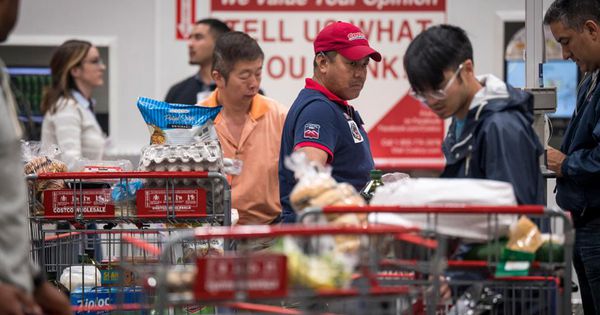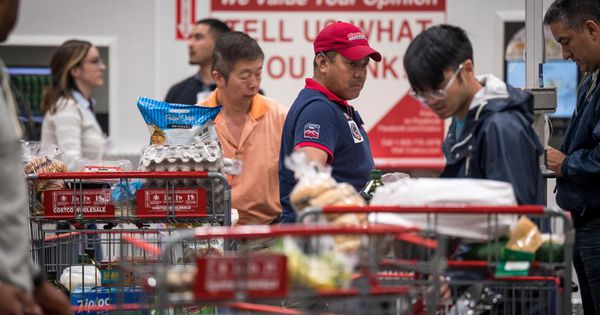
As holiday returns and exchanges continue to roll in, it’s likely many retailers and brands are feeling the pinch. Free shipping and returns policies — once considered a perk are now standard in the online retail industry, promoting consumer behaviors that drive up costs for retailers and negatively impact profits. And it’s only getting worse. Online sales are still only around 10% of total commerce, but are growing at a rapid pace: RBC Capital predicts online sales to account for 24 percent of total sales by 2027.
Much of this growth is thanks to Amazon Prime — its free shipping and returns have created an expectation quickly adopted and now demanded by consumers. With many retailers following Amazon’s footsteps over the past few years to accommodate this new norm, consumers now expect that all purchases made online will include not just fast delivery, but also free shipping and returns.
This has fueled consumer buying practices that are not sustainable for most retailers, as more consumers buy multiple items and sizes online, keeping only their favorites or the items that fit. This drives return rates that are already four times higher for online purchases than for physical store purchases, and a major cost item and headache year-round for retailers.
Customers wait in line at a Costco Wholesale Corp. store in San Francisco, California. Photographer: David Paul Morris/Bloomberg© 2018 Bloomberg Finance LP
Not only are returns unpredictable and difficult to account for on a balance sheet, but they also bring the burden of direct processing, restocking and logistical overhead associated with it. Returned merchandise may be past season, on markdown or no longer sellable at all by the time a customer returns it—resulting in lost profitability. Approximately half of holiday returns go back on the shelves, but many items end up being sold at a discount.
While this “no cost, no risk” way of shopping online means that returns for online retailers are skyrocketing, with 34 percent of Americans saying they will return gifts they received over the holiday season according to a new study, there seems to be little way around it. According to research from Boston Retail Partners, 68% of U.S. shoppers report that they would be more inclined to shop on a site that offered automated returns capability, while only 8% of retailers report offering this feature, which includes being provided return labels or having refunds triggered following the scanning of a returned package. Further, 96% would revisit a retailer for repeat business based on a good returns experience.
When it comes to those products being purchased for others (rather than purchasing for oneself), return rates skyrocket even further, as the chances of getting it wrong increases. There is also the lost opportunity of those potential gifts for buyers who might not want to “gift” their recipients the burden of ‘running an errand’ and returning their gift.
The good news is that technology can help, and many retailers are now investing in new solutions that not only help to boost conversion but also help mitigate returns.
Here are three types of retail technology solutions to help reduce returns and provide customers with an interactive, personal experience before the purchase, helping them chose the right fit, size, and style before they purchase, minimizing the need for returns or exchanges:
- Augmented Reality (AR): AR technology, for example, those embedded in digital apps such as Lowe’s or Houzz can help ease the shopping experience and increase conversion, but also reduce costly returns. Customers can virtually place furnishings in rooms in their own home to see how they will look before they make a purchase. This helps shoppers visualize how furniture will fit in their space and see if the design will match their current style.
- Personalization and Customization: Coach, Levi’s and Nike are a few brands that offer customization and personalization services to customers. Shoppers can have their Coach handbags monogrammed and their Levi’s denim embroidered with designs they select. They can also design their own Nike footwear through the “NikeiD” customization program. Return rates for customized and personalized items are dramatically lower than for other merchandise because the items are specifically designed by or for the individual wearer, and in many cases cannot be returned due to the personalized features. The downside though can actually come from the side of conversion when these items are being purchased for someone else. Many gift shoppers have a hard time taking the risk of getting the wrong thing and “force” the recipient to accept their gift without the ability to return, ending with the shopper not buying the product at all.
- Digital Gifting Services: To help prevent gift returns, retailers and technology companies are offering solutions that help take the guesswork out of gifting. Digital gifting allows gift givers to select personalized gifts for recipients, who can then choose the exact color, style, and size of the gift, essentially exchanging virtually before the item is even shipped—ensuring that they receive something that is just right for them. Retailers such as Coach, Kate Spade, Michael Kors, Neiman Marcus, Saks Fifth Avenue, Target and Uniqlo all offer customers the option of digital gifting, which removes uncertainty from the gifting process, while still offering an element of surprise, and delight for the recipient.
These solutions all serve to make shopping more experiential. AR apps help solve issues of imagining what it would look like – fit, style and size – by allowing customers to visualize products before buying. With digital gifting services, both the giver and receiver participate in an experience that is more personal and thoughtful than the gift card option but where flexibility, risk-mitigation, and ease are important to the buyer. Personalization and customization solutions make the customer the designer, ensuring that every item is unique and perfectly suited to the wearer. With e-commerce sales growing quickly, and return rates along with them, technology solutions that can help increase conversion while also mitigating returns will be crucial tools for retailers in 2019 and beyond.

